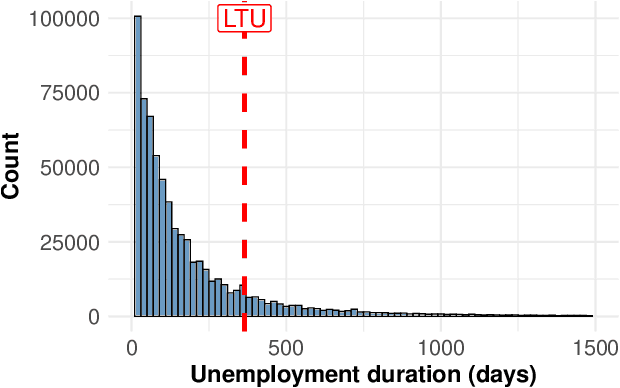Juan Carlos Perdomo
In Defense of Defensive Forecasting
Jun 13, 2025Abstract:This tutorial provides a survey of algorithms for Defensive Forecasting, where predictions are derived not by prognostication but by correcting past mistakes. Pioneered by Vovk, Defensive Forecasting frames the goal of prediction as a sequential game, and derives predictions to minimize metrics no matter what outcomes occur. We present an elementary introduction to this general theory and derive simple, near-optimal algorithms for online learning, calibration, prediction with expert advice, and online conformal prediction.
The Value of Prediction in Identifying the Worst-Off
Jan 31, 2025



Abstract:Machine learning is increasingly used in government programs to identify and support the most vulnerable individuals, prioritizing assistance for those at greatest risk over optimizing aggregate outcomes. This paper examines the welfare impacts of prediction in equity-driven contexts, and how they compare to other policy levers, such as expanding bureaucratic capacity. Through mathematical models and a real-world case study on long-term unemployment amongst German residents, we develop a comprehensive understanding of the relative effectiveness of prediction in surfacing the worst-off. Our findings provide clear analytical frameworks and practical, data-driven tools that empower policymakers to make principled decisions when designing these systems.
The Relative Value of Prediction in Algorithmic Decision Making
Dec 13, 2023Abstract:Algorithmic predictions are increasingly used to inform the allocations of goods and interventions in the public sphere. In these domains, predictions serve as a means to an end. They provide stakeholders with insights into likelihood of future events as a means to improve decision making quality, and enhance social welfare. However, if maximizing welfare is the ultimate goal, prediction is only a small piece of the puzzle. There are various other policy levers a social planner might pursue in order to improve bottom-line outcomes, such as expanding access to available goods, or increasing the effect sizes of interventions. Given this broad range of design decisions, a basic question to ask is: What is the relative value of prediction in algorithmic decision making? How do the improvements in welfare arising from better predictions compare to those of other policy levers? The goal of our work is to initiate the formal study of these questions. Our main results are theoretical in nature. We identify simple, sharp conditions determining the relative value of prediction vis-\`a-vis expanding access, within several statistical models that are popular amongst quantitative social scientists. Furthermore, we illustrate how these theoretical insights may be used to guide the design of algorithmic decision making systems in practice.
 Add to Chrome
Add to Chrome Add to Firefox
Add to Firefox Add to Edge
Add to Edge